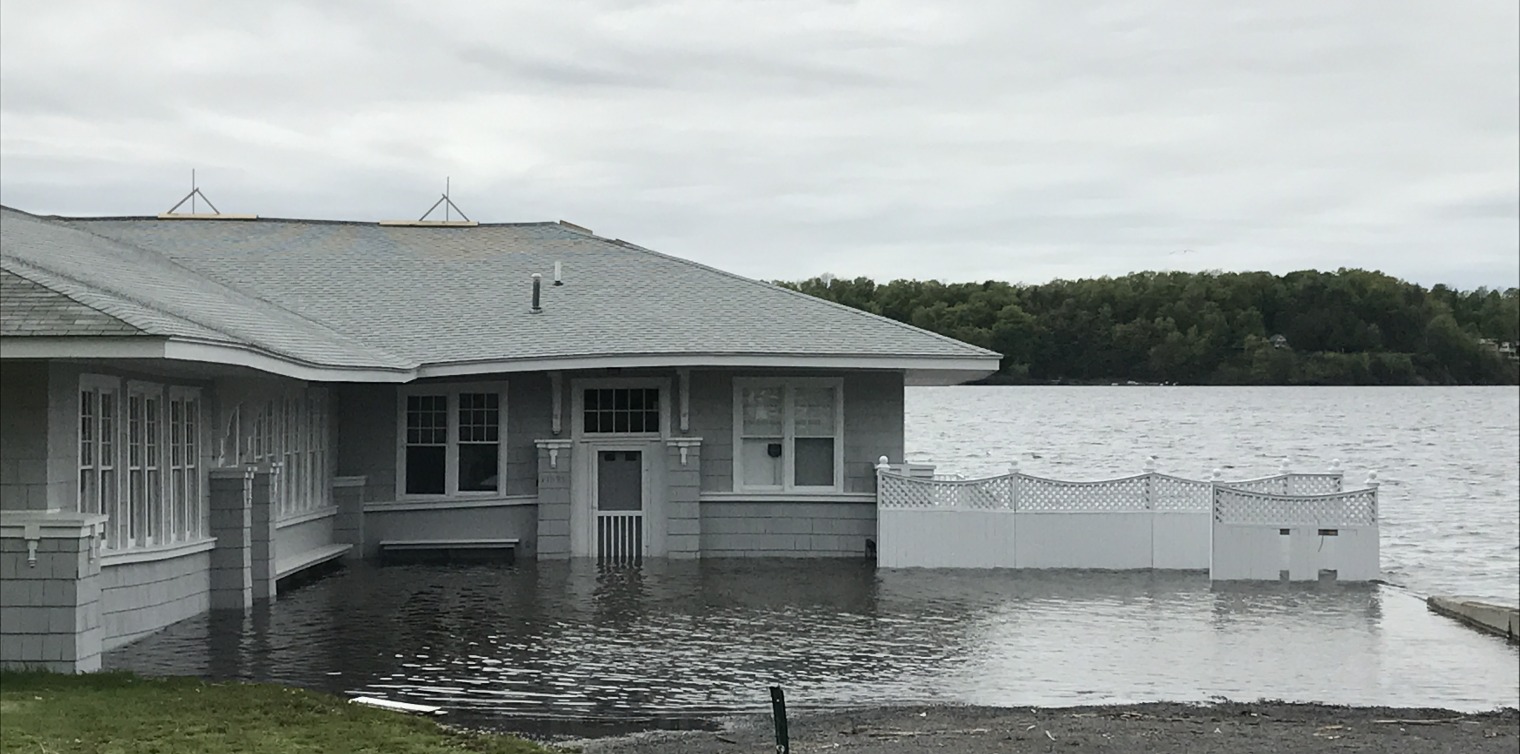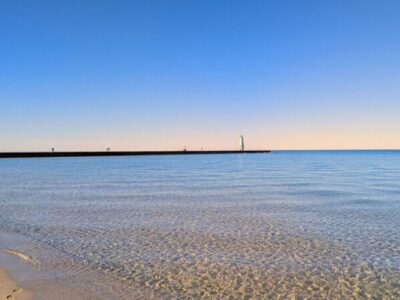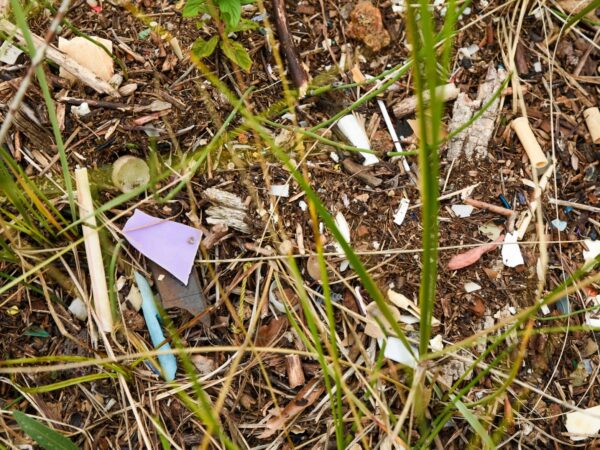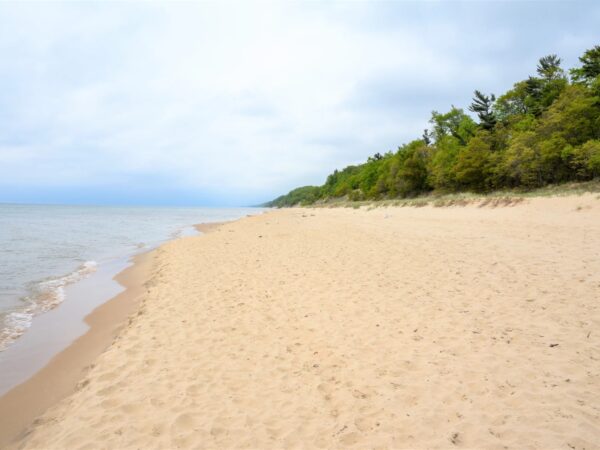
By Caitlin Whyte from Great Lakes Today
The grey sky seems a bit more ominous out here.
With the winds whipping around and waves crashing on the break wall, Douglas Dobson walks around his home. His neighborhood sits on a narrow strip of land, with Lake Ontario to the north and several ponds to the south.
Dobson has kept the wall of sandbags he built this spring when flooding was at its worst. “I had over 400 sandbags in front of the house, and close to 1,300 sandbags around my two garages on the other side.”
Dobson, president of the Crescent Beach Neighborhood Association, has lived here for 41 years, raised a family and retired on the lake shore. He says this past year’s weather is the worst he’s seen. The lake got much higher, and has stayed higher longer.
Like some officials, Dobson blames a new policy that regulates the level of Lake Ontario. These critics say the lake should have been lowered sooner – before big rains came last spring.
Now it’s still about a foot higher than normal.
“Normally at this time of year, we have sandy beaches out here, you can walk all the way from here down to the crescent beach restaurant,” Dobson says.
Today, there’s not a patch of beach in sight – it’s all underwater.
But flooding and erosion are natural, says Lana Pollack. She’s U.S. Chair of the International Joint Commission, which sets policy on lake levels.
“I think it would be wrong to give false hope, that somehow we’re going to learn something that will stop the flooding in very low lying areas,” she said at a recent conference in Buffalo. “Or stop the erosion which is a natural phenomenon that has been ongoing since the glaciers receded many thousands of years ago.”
Pollack says many people saw the policy changes and the flooding months later, and assumed the two were related. They ignored the record spring rainfall.
“What’s happened — I think too often in America — is people paying too little attention to the facts and creating misinformation and it’s unfortunate, it’s unfortunate,” she said.
Back on the south shore of Lake Ontario, Virginia Meier is raking her lawn on a cold November morning. She’s lived on the lake her entire life, and has spent the last 16 years in a house near Dobson’s.
Walking around her property, she rattles off a list of things that were damaged by floodwaters.
“We just had a new sump pump put in, and we’ve had the cracks filled into our basement just yesterday,” she says. “And tomorrow they’re coming to finish up, so this has been going on since July when you have estimate after estimate then you have workers coming in to fix you’re basement.”
Meier says some neighbors haven’t even fixed their basements. That means taking time off to be home when workers come, and doing lots of paperwork to get money from the state.
And then of course there’s all the stuff that money can’t replace. “All the stuff that you keep, all your kids’ toys and everything that you have in your basement gets lost because we had about two and a half inches flooded into our basement.”
Now Meier’s worried about winter coming.
She says there’s usually a decent size beach between her property and the lake. She and other residents count on this buffer to limit erosion; a frozen lake also helps.
But with more water comes more movement — and less chance of Lake Ontario freezing. So Dobson, Meier and others in Crescent Beach may face a long, wet winter.




